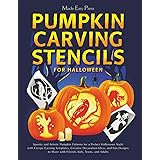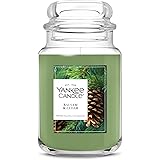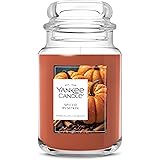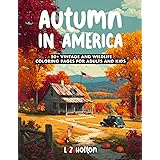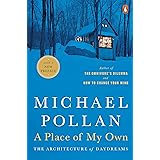Unlocking Creativity: Ingenious Ways to Upcycle Everyday Items and Embrace Sustainable Living
In an era where environmental consciousness is paramount, the concept of waste reduction has become increasingly vital. According to the Environmental Protection Agency, in 2018, approximately 292.4 million tons of municipal solid waste were generated in the United States, with only 32.1% being recycled or composted. Consequently, a significant volume of materials continues to end up in landfills, contributing to environmental concerns. This pressing issue underscores the importance of practices like upcycling, which transforms discarded items into new products of higher value, functionality, or beauty.
The insightful video presented above offers a concise yet powerful demonstration of how common household objects can be revitalized through inventive repurposing. From simple storage solutions to decorative crafts, the potential for upcycling is vast and often overlooked. This article aims to expand upon these clever upcycling ideas, providing additional context, benefits, and practical considerations to empower readers in their journey toward more sustainable living. It will be observed that numerous items, frequently dismissed as trash, possess remarkable hidden potential.
Transforming Everyday Plastics: Creative Repurposing for Practicality
Plastic waste represents a substantial environmental challenge; however, it also offers a wealth of opportunities for creative reuse. Many plastic items, with their durable and versatile properties, can be reimagined into functional household tools. The video effectively illustrates how various plastic containers, often destined for disposal, can be given a second life. This approach not only minimizes waste but also allows for the creation of customized solutions tailored to specific needs.
For instance, a simple straw, when cut and modified, can be transformed into an effective cable organizer. This prevents tangled wires, which are frequently a source of frustration and clutter for many individuals. Furthermore, empty shampoo bottles are often discarded without a second thought; however, these containers can be expertly cut and shaped to form a convenient sink caddy. Such a caddy is ideal for holding sponges, brushes, or small cleaning supplies, thus keeping the sink area tidy and organized. These examples demonstrate that through a little ingenuity, plastic items can be prevented from becoming pollutants and instead become valuable assets within the home.
In addition, smaller plastic bottles, such as those used for travel-sized toiletries, can be repurposed for a multitude of uses. They are often ideal for storing small amounts of paints, glues, or even condiments for picnics, thereby reducing the need to purchase new containers. When considering the vast amount of plastic consumed daily, these small acts of upcycling collectively contribute to a notable reduction in waste. Therefore, a conscious effort to identify the repurposing potential of plastics is highly encouraged.
Smart Solutions for Storage and Organization from Discarded Items
Maintaining an organized living space is frequently a challenge, yet effective solutions are often found in the most unexpected places—namely, in items typically considered waste. Upcycling allows for the creation of bespoke storage solutions that are both cost-effective and environmentally friendly. Several brilliant ideas were highlighted in the video, demonstrating how common household discards can be ingeniously transformed into practical organizational tools. It is important to recognize that a critical eye for potential can turn rubbish into utility.
One excellent example is the common shoebox, which is almost universally available. Instead of being thrown away, these sturdy cardboard boxes can be embellished and compartmentalized to create a practical makeup organizer. The interior can be divided with cardboard inserts, allowing for separate sections for brushes, palettes, and lipsticks. Consequently, a personalized and functional storage unit is created, often surpassing the utility of store-bought alternatives. Furthermore, the video showcased how a shoebox can also be adapted into a cotton round dispenser, providing easy access and a neat presentation for cosmetic pads.
Another overlooked item with remarkable utility is the silica packet. These small packets, commonly found in new products like shoes or electronics, are typically discarded, yet their moisture-absorbing properties are incredibly valuable. When strategically placed, silica packets absorb moisture to prevent rust in toolboxes or tarnish on jewelry. They can also be used to dry out a wet phone or prolong the life of important documents. This subtle yet powerful upcycling tip addresses a frequent household problem with a simple, readily available solution, illustrating that even the smallest items hold significant potential.
Cultivating Green Spaces Creatively: Sustainable Planters and Gardens
For enthusiasts of gardening and greenery, upcycling provides an exciting avenue for creating unique and sustainable planters. The practice not only beautifies living spaces but also contributes to ecological well-being by giving new life to materials that would otherwise contribute to landfills. The video briefly touched upon this, showcasing a couple of innovative methods for nurturing plant life using repurposed items. It is often observed that a touch of creativity can transform ordinary objects into thriving miniature ecosystems.
A simple shoebox can be repurposed into a charming succulent garden, offering a compact and stylish way to display these drought-tolerant plants. The shallow nature of a shoebox is often ideal for succulents, which do not require deep soil. Proper drainage should be ensured, perhaps by lining the box and adding small pebbles at the bottom, before introducing soil and the plants. Consequently, a delightful indoor garden is created, adding a touch of natural beauty to any room. This approach allows for a customizable aesthetic that is both eco-conscious and visually appealing.
Furthermore, the concept of a self-watering planter, briefly highlighted in the video, represents a remarkably practical upcycling project. This can be constructed from a plastic bottle, typically a two-liter soda bottle, cut in half. The top half is inverted and placed into the bottom half, creating a reservoir for water below and a planting area above. A wick, made from cotton thread or an old shoelace, is then passed through the bottle’s neck to draw water upwards into the soil. This ingenious system ensures plants receive consistent moisture, preventing both uneven ripening for fruits or vegetables and allowing them to stay fresh for longer periods. It also simplifies plant care, which is particularly beneficial for those with busy schedules.
Ingenious Hacks for Home and Comfort: Repurposing for Everyday Needs
The spirit of upcycling extends far beyond mere organization or gardening; it encompasses a broad spectrum of everyday needs, transforming mundane objects into highly useful tools and comforts. Many items found around the house possess latent utility, waiting to be discovered and applied. The video provided a quick glimpse into a few such transformations, underscoring the boundless possibilities for innovation. It is often considered that resourcefulness is a key attribute of sustainable living.
For example, an old back scratcher, once its primary function is no longer needed, can be repurposed in surprisingly effective ways. The unique shape of a back scratcher often makes it ideal for reaching into tight spaces, such as behind furniture or under appliances, for cleaning purposes. Furthermore, the handle can be modified to serve as a hook for lightweight items, adding to vertical storage options in a closet or pantry. Therefore, what was once a singular-purpose item is transformed into a versatile tool, extending its lifecycle and value.
Even seemingly useless items like old game pieces or small discarded toy parts can be given new life. These small objects are frequently overlooked, yet with a bit of industrial glue and perhaps some Velcro, they can be repurposed into unique decorative elements or functional markers. They could be affixed to magnets for a custom refrigerator set or used to label shelves in a child’s playroom. The possibilities for creative expression are truly endless when one begins to view these small pieces as building blocks for new creations.
Moreover, the transformation of an old pillow and a dollar store rug into new, practical items is a testament to the potential for textile upcycling. The stuffing from an old pillow can be reused for craft projects or to refresh other worn cushions. When combined with a dollar store rug and perhaps some cotton thread, a unique pet bed or a small floor mat can be crafted. This project not only reduces textile waste but also provides a personalized touch to home décor without incurring significant costs. This demonstrates that comfort and functionality can be achieved through thoughtful repurposing.
Embracing the Broader Impact of Upcycling for a Greener Tomorrow
The examples highlighted both in the video and within this article collectively paint a compelling picture of the versatility and benefits associated with upcycling. Beyond the individual practical advantages, such as enhanced home organization or cost savings, the broader implications of embracing this practice are profound. It is widely acknowledged that conscious consumption and waste reduction are critical components of environmental stewardship. Therefore, each upcycled item represents a small, yet significant, contribution to a healthier planet.
Through upcycling, the demand for new raw materials is effectively reduced, which in turn lessens the energy consumption and pollution associated with manufacturing processes. The lifespan of goods is extended, diverting them from landfills where they would otherwise decompose slowly or release harmful chemicals. Moreover, upcycling fosters a culture of creativity and resourcefulness, encouraging individuals to think innovatively about the items they possess and consume. This paradigm shift, from a linear “take-make-dispose” model to a more circular economy, is imperative for future generations.
In conclusion, the practice of upcycling is more than just a trend; it is a powerful lifestyle choice that yields tangible benefits for both individuals and the environment. By carefully considering how everyday items can be reimagined and repurposed, a significant positive impact can be achieved. It is hoped that the ideas presented here will inspire readers to look at their surroundings with fresh eyes and discover the endless possibilities for creative upcycling in their own homes and communities.




